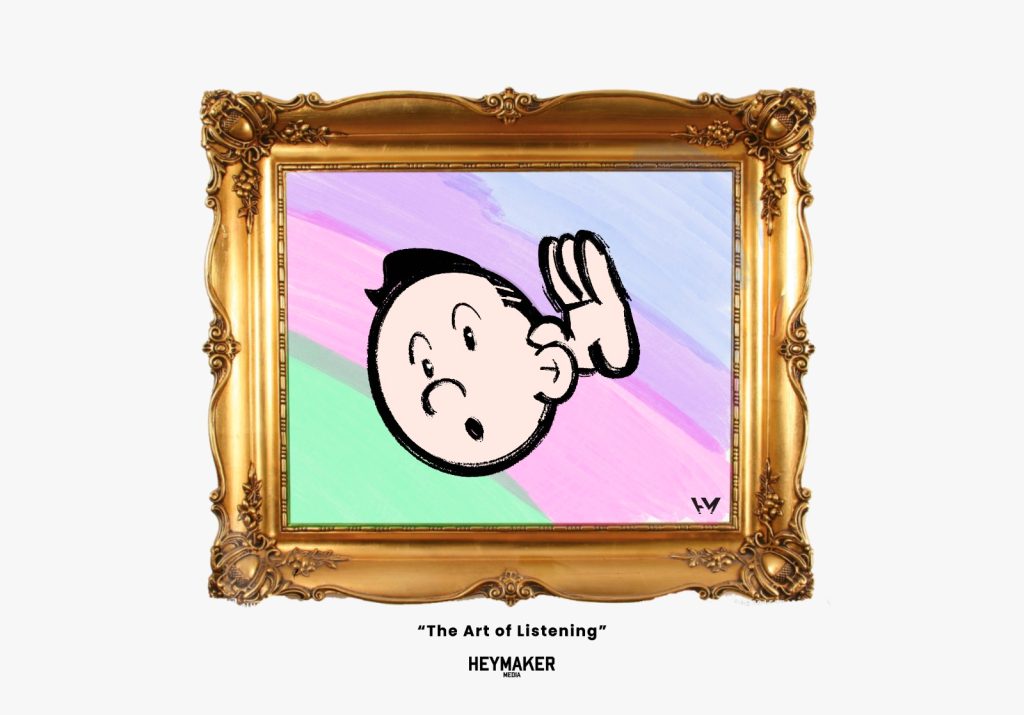An insight into branding
A Lesson in Marketing: TRUFF
In this day and age, there are few people who understand the definition of “branding”, let alone how to apply that principle. TRUFF, however, is an example of a company that has mastered both but it’s not just the mastery of the brand which inspired me to write this blog, but rather their entire journey (along with my life-long dedication of collecting hot sauce from around the world!)
At the end of this blog post, you’ll see how TRUFF’s marketing strategy prompted a steady “reaction-change” in me until I eventually became a BELIEVER!
Disclaimer: TRUFF has not compensated Heymaker Media in any way for this post
But First, What is Branding?!

If you round up 10 people in a room, in fact let’s narrow this further to 10 creative people in the industry, you will undoubtedly receive 10 different answers.
Those answers can vary from logos and styleguides to the product offering and features. Are any of these true? Errrrrrr, how abouttt…NAH!
Clients have a difficult time digesting this but I’m afraid to say that your “spectacular” product or “process” is likely not that unique. There’s someone around the block doing exactly what you’re doing, the only difference is the phraseology and how they ‘package’ it. Truth hurts, I know.
We often get so bogged down with the logo and the colors wanting for it look absolutely “perfect” when in actuality, it makes 0 difference to your brand. I mean look at Louis Vuitton. A basic “L” and a “V”, and they charge a bazillion dollars for one sock (yes, one)…Because the logo doesn’t mean sh*t.
What truly makes a client come back for MORE is what lies beneath, the core essence of the company, its ‘voice’, culture and most importantly, how the company makes its audience ‘FEEL’.
You can certainly influence branding but you cannot control it. The ‘Godfather of Branding’ (as I like to call him), Marty Neumeier, sums it up perfectly: “It’s what THEY say it is (not you)!”
This is branding.
Ok, now back to TRUFF…
Monetizing the Hustle
I often say that everywhere you turn on social media, everyone has thousands and thousands of followers/likes, but at the end of the day if you’re not monetizing or leveraging your following then what’s it all worth?! (NADA!)
Enter TRUFF, which actually started as a food content brand sprinkled with hip hop culture, then capitalized (and changed their original name, “@sauce”) once they hit over 10k followers.

But they didn’t just do a 180 switcheroo blindly
First, Nick tested the market by surveying the food space to identify their niche. Then, Nick and Nick (let’s call ‘em Nick²) identified that they wanted to appeal to millennial and immigrant foodies with the objective of introducing a new type of “luxury” flavor.
Let’s Pause and Dissect…
Testing and Specializing
Testing

I’m SO big on testing/market research especially when it comes to ‘new’ ideas/concepts. Testing, when done correctly, can not only safeguard against risk but also provide unique insights when it comes to consumer habits and preferences.
Lack of testing can also be the downfall of many businesses due to the disconnect that’s created between the business owner and the consumer themselves, whether it be messaging, design or products. (I don’t care if you have 50 years of experience under your belt, you still don’t know everything about your target audience)
Testing itself can be done in many different ways from surveying and questionnaires to focus groups and one-on-one interviews. Depending on the goal, either of these methods can be fine but removing interview bias is critical in order to obtain key insights.
In this instance, market research paid dividends as it allowed Nick² to unravel insights and specialize in the luxury hot sauce market. (A niche within a niche!)
Specializing
“If we target that market, then we’re going to neglect the others” – sound familiar?! This was a comment that I, myself, heard from team members when Heymaker decided to specialize in growing companies (SMBs).

Most business owners are afraid to specialize because it reduces their pool of leads. It’s as simple as that. As a result of this ‘fear’, you become the jack of all trades and get 100% market share of….a big fat goose egg: 0
Positioning yourself as the “go to” for a particular sliver of the market should not only be welcomed but it will also form a loyal target base and leave your competitors in the dust.
Nick² leveraged their market research insights to specialize in luxury hot sauce, an area of the market that is largely untapped.
Furthermore, they identified several elements to reinforce their brand’s identity of “luxury, but namely:
- Truffle as a key ingredient. Any foodie knows that “TRUFFle” on anything adds luxury so throwing that in as a key ingredient was a genius move.
- The simplistic graphics, clear type-font along with the “gem-like” lid further showcases the notion that “TRUFF is luxury”, and not a replacement for “Cholula-lovers” (don’t get me wrong I’m big on Cholula but it’s a different type of sauce!).
Marketing Strategy
I intentionally haven’t gone into detail about TRUFF’s marketing strategy, because that’s best for a separate post otherwise you’ll be here until tomorrow. However, I’d like to pull out two key pieces from their strategy: 1) Social Media and 2) Paid Media and Retargeting
To showcase the positive impact of TRUFF’s “Retargeting” marketing strategy, I will share my precise reaction after finding about their product:
- When I saw my 1st FB ad for TRUFF, “!?!?! Flamin eckk, $15 for hot sauce !?!?!”
- When I saw my 4th TRUFF ad, “$15 for hot sauce?!”
- When I saw my 8th TRUFF ad, “$15 for the quality doesn’t seem so bad. Hmm…” (still no purchase)
- When I saw TRUFF in Whole Foods’ hot sauce aisle, “TRUFF?? In store?! Shut the front door and take my money!!
And this my pedigree chums, is the power of a coherent social and paid ads strategy.

Closing Thoughts
TRUFF knew that they wanted to provide their “foodie” customers with a refreshingly new luxury hot sauce experience. After the formation of their vision which targeted millenial and immigrant foodies, they tested it further by surveying their ideal audience. Their willingness to specialize and test allowed them to market their product accordingly, ultimately sending them into the stratosphere.
You can apply these principles too but you have to be willing to specialize and potentially alienate some areas of the market along the way.
Always remember
Once the essence of your company is instilled, it’s your customers who will shape your destiny (not you!)







